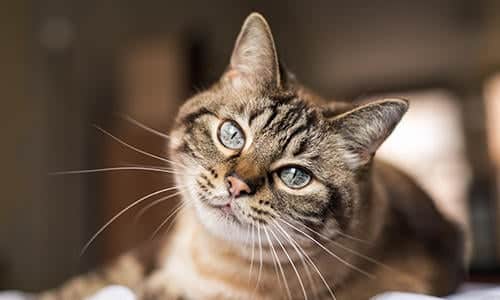If you have questions about the health of your newly adopted pet, please consult your veterinarian. The adoption contract provides for an exchange within the first two weeks if your pet becomes seriously ill. Please carefully read the adoption contract in its entirety.
WHAT IS A KITTY COLD?
Upper respiratory disease is one of the most common conditions associated with cats that have been in a shelter environment. Watch your new pet for lethargy, lack of appetite and sneezing.
HOW IS IT TRANSMITTED?
Though we do keep cats from different backgrounds in separate cages, disinfect all cages daily, make efforts not to cross contaminate, and vaccinate all incoming cats, it is impossible to prevent the spread of viral infection via airborne routes. Therefore, your adopted cat/kitten could have been exposed to a respiratory virus in a way similar to how people are exposed in crowds and children in schools. An incubation period is the time from the exposure to the time of noticeable clinic signs. While we make an effort to identify incubating cats/kittens by checking for a fever during our final health exams upon adoption, this does not always prevent incubating animals from going home.
WHAT IF I HAVE OTHER CATS IN MY HOME?
If you have other cats in your home, we recommend you do not allow them to be around or in the same area (ideally a five foot distance should be maintained) as your new pet for a period of 10 days to prevent possible transmission of respiratory viruses. You can serve as a means for virus transmission and should wash hands between handling cats. Also, your cat(s) at home can be carriers of viral infection while showing no clinical signs. During the time of stress, these cats can shed virus and/or have clinical symptoms and can serve as a source of infection to your newly adopted cat. After the 10 day period, you should begin the pet introduction process as suggested by an ARL Adoption Counselor.
WHAT ARE THE SIGNS?
Watch your new pet for lethargy, lack of appetite and sneezing. If marked coughing occurs or if nasal discharge is yellowish or greenish, this may indicate a bacterial infection as opposed to the more common uncomplicated viral upper respiratory disease and your pet will require antibiotics.
HOW ARE KITTY COLDS TREATED?
Most viral upper respiratory infections will run their course in about 10 days without antibiotic treatment similar to a cold or the flu in humans. Others may need oral antibiotics to prevent secondary bacterial infection in the nasal passages. Humidification (a vaporizer), a warm environment and good nutrition will help the cat’s immune system fight the virus. Perhaps the most important factors are maintaining adequate water and food intake. You may need to encourage eating by offering canned food (having the added benefit of high water content) and warming it to increase its odor and palatability.
Source: ARL – Animal Rescue League of Iowa, Inc. 2018 – https://www.arl-iowa.org/
